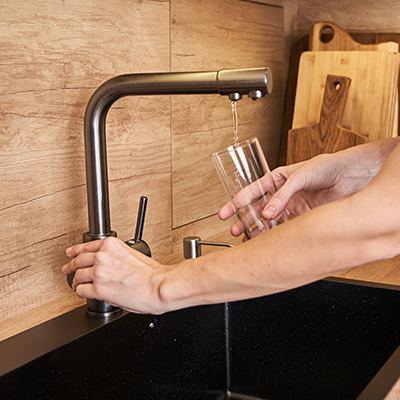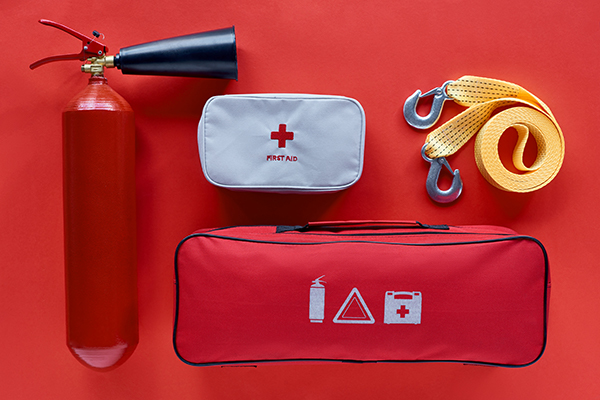
Introduction
In a country like Australia, keeping yourself educated about fire prevention and fire safety should be taken more as a duty rather than a responsibility alone. Australia is notorious for its rich and bushy vegetation, that tend to become a dangerous kindling during the hot and dry months of summer. Every year bushfires erupt during the arid summer months, and lay extensive acres of flora to waste. Fire safety and fire prevention is taken very seriously in Australia. Schools educate children as early as primary school to safely escape, evacuate and notify authorities in case of a fire.
Caravanning and camping out in the open brings us in close contact with nature and the lush vegetation mentioned earlier. While we enjoy the wonderful sights and revel in the freedom of roaming the vast outback we must ensure that our recklessness should not contribute to its destruction.
In this article we will be exploring the different fire classes in Australia and the different types of fire extinguishers and the types of fires they are suitable for.
Australian Fire Classification
Fire classification is based on the type of fuel that the fire uses to combust and form the flame. However in case the fire involving energized (current flowing) electrical equipment, it is always classified as E. Technically electricity is not a fuel and does not contribute to the burning of the fire, but is seen as the ignition starter. Once the electrical current has been isolated from the area of the fire, the classification changes depending on what is now burning.
The fire is not only rated by type of fuel, but also by size. We cant go expecting to put out a raging bush fire with a hand held portable fire extinguisher. Depending on the class of fire the numerical rating can mean different things. The meanings of the numerical ratings are elaborated below in the descriptions of each fire class. Numerical ratings are determined by ANSI standards (American National Standards Institute), and hence use U.S. units of measurement. Some fire classes like class E fires, have no numerical rating.
To help people choose the right type of extinguisher for the type of fire, pictograms are used on the body of the fire extinguisher. There is no set standard for the pictograms, and different brands of extinguishers may use slightly different pictograms. Sometimes the class letter may be used beside the pictogram to further help the identification process.
Class A – Ordinary Fires
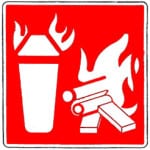 Class A fires involve ordinary combustibles such as paper, wood, plastic, cloth…etc. These are the most common type of fires. The numerical rating for this type of fire ranges from 1 to 40, and always precedes the letter A on the fire extinguisher. This rating multiplied by 1.25 gives the equivalent extinguishing capability in U.S. gallons. For example if a extinguisher is rated at 20A, it means that it has the equivalent extinguishing capacity as 20 x 1.25 = 25 gallons of water.
Class A fires involve ordinary combustibles such as paper, wood, plastic, cloth…etc. These are the most common type of fires. The numerical rating for this type of fire ranges from 1 to 40, and always precedes the letter A on the fire extinguisher. This rating multiplied by 1.25 gives the equivalent extinguishing capability in U.S. gallons. For example if a extinguisher is rated at 20A, it means that it has the equivalent extinguishing capacity as 20 x 1.25 = 25 gallons of water.
Class B – Liquid Fuel Fires
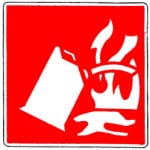
Class B fires involve liquid fuels such as grease, petrol, oil, diesel…etc. Water should never be used to extinguish Class B fires as the oil can float on the water surface and continue burning. As the water flows the oil will flow with it and spread to a wider area. The numerical rating represents the area in square feet of fire that a non-expert can expect to put out with the extinguisher.
Class C – Gaseous Fuel Fires
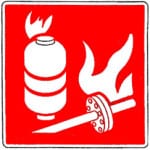
Class C is a more recently introduced classification. They are fires that involve gaseous fuels e.g. propane, LPG, butane…etc. Originally this class was combined with B until it was necessary to make a separate class for more specific types of extinguishers. Similar to class B, the numerical rating represents the area in square feet of fire that a non-expert can expect to put out with the extinguisher.
Class D – Metal Fires
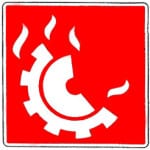
Class D fires are one of the rarest type of fires. Class D fires involve combustible metals or metal shavings e.g. Sodium, Potassium, Lithium. Lithium-ion batteries are fairly common in top of the range caravans and motorhomes nowadays, Although modern production methods and battery management systems have reduced the chance of Lithium battery fires, some cheaper brands may still pose a higher fire risk. This class of fire has no numerical rating.
Class E – Electrical Fires
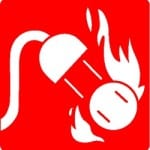
Class E fires are an oddity among the other classes, that are all based on the type of fuel the fire combusts. Electricity itself is not a fuel and does not burn like other fuels. However it is a potential source of heat and ignition especially during a short circuit. Improper DIY wiring and electrical connections can pose a serious risk for the occurrence of class E fires. Due to the potential of electrical shock, class E fire extinguishers are made of non conductive materials such as dry powder and carbon dioxide.
Class F – Cooking Oil Fires

Class F fires involve edible cooking oils and fats such as lard. Minor class F fires such as those encountered when dabbling in the flambé technique of cooking can be easily mitigated by covering the utensil with a lid and cutting off the fire’s supply of oxygen. Water can also be used as long as the fire is not too big. Class F fire extinguishers are mainly used in industrial kitchens, where fire can be exposed to extremely large quantities of oils, and spread dangerously.
Australian Standard Fire Extinguishers and Colour Codes
Fire extinguishers which comply with Australian Standards are marked with a classification and rating, determined in accordance with AS/NZS 1850. The standards are periodically revised by the Joint Standards Australia/Standard New Zealand committee. The most recent revision was issued in 2009. The standards prescribe minimum requirements that an extinguisher must meet in order to be suitable for a particular fire class. The test requirements elaborated within the standards, helps test an extinguishers capacity to extinguish a perceived type and size of fire relevant to the identified risk.
As mentioned earlier fire extinguishers are labelled with the class of fire they are suitable for. A numerical rating is also indicated where relevant. When a fire extinguisher is rated for more than one class of fire, it is expressed in alphabetical order.
For example if it is classified 2A:40B(E), it means it is suitable for,
- Class A fire with a rating 2 (or equivalent to dousing capacity of 2.5 gallons of water)
- Class B fire with a rating or coverage area of less than 40 square feet
- Class E fires involving energised electrical equipment
To help with easily identifying the type of extinguisher they are colour coded on the extinguisher body. Since the most recent revision of the standards all extinguishers are to be painted red as the primary colour. Colour codes that represent various extinguishing agents within the contents, are painted as a band across the primary red colour. As per regulations, the coloured band – if used – should cover at least 10% of the body of the extinguisher.
Colour codes and the contents used are elaborated below:
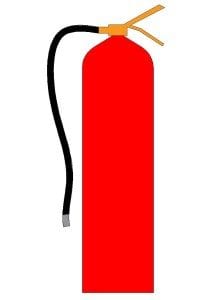
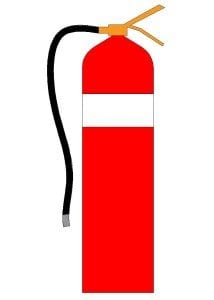
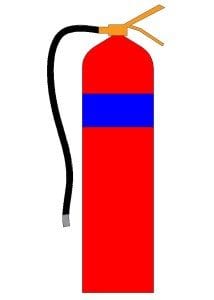
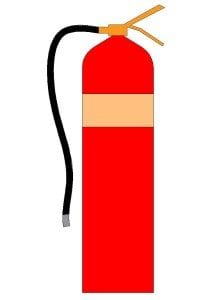
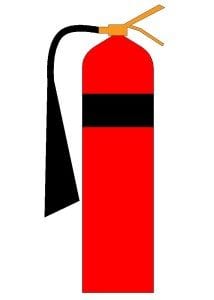
Solid red: These extinguishers contain water under pressure. They are to be used for only Class A fires. Using these extinguishers for any other class of fire can prove to be detrimental and hazardous.
Solid red with a white band: These extinguishers contain dry bi-carbonate based powder. They are one of the most versatile of extinguisher types. They are usually rated for 2 or more fire classes. The most commonly found and used extinguisher in caravans is the AB(E) type which is rated for three fire classes. AB(E) fire extinguishers contain ammonium phosphates.
Solid red with a blue band: These extinguishers contain water under pressure with a film forming foam additive. They are mainly used for liquid fuelled fires such as Class F and Class B fires. The foaming agent covers the surface of the liquid fuel, and stops the fire by cutting off the oxygen supply form the fuel.
Solid red with a oatmeal band: These extinguishers usually contain potassium based alkaline solutions. They are used mainly for Class F fires. The alkaline solution reacts with cooking oils and fats to produce a layer of soap that cuts off the oxygen supply to the oil.
Solid red with a black band: These extinguishers usually contain carbon dioxide gas under pressure in liquid form. As the gas is expelled from the nozzle it evaporates and cools the surrounding air. These extinguishers are only effective at very close range, since the CO2 gas is easily dispersed. They are most suitable for fires around sensitive electronic equipment, since they do not leave any residue behind that can damage the equipment.
A quick reference chart that shows the suitable extinguisher types for various fire classes is given below:
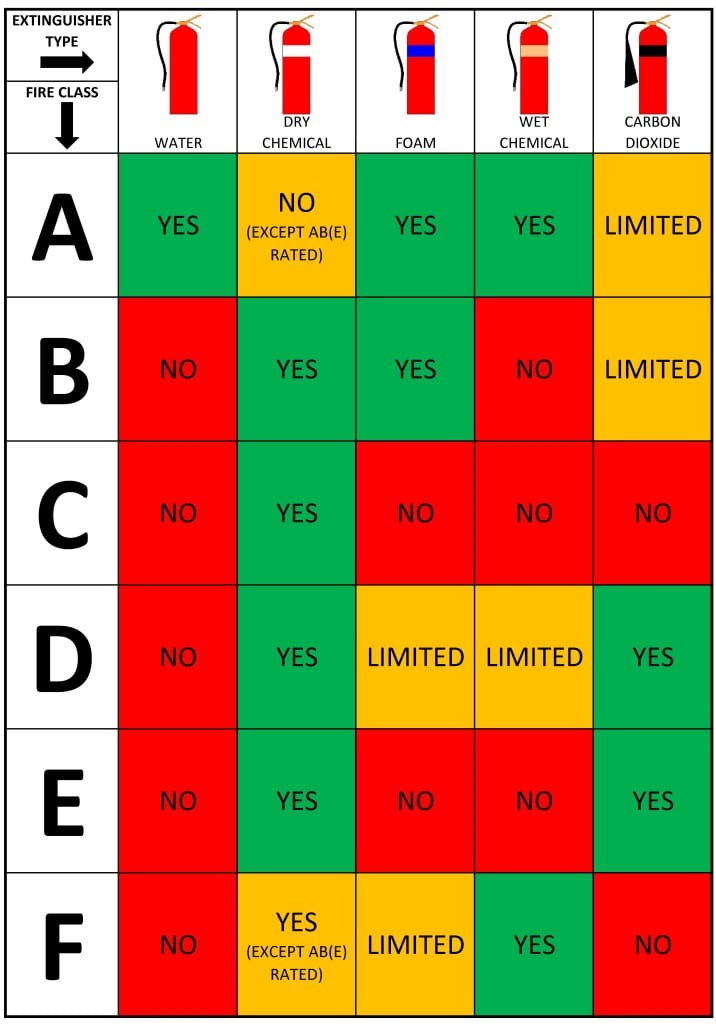
Buy Extinguishers Online
Some online sources for purchasing fire extinguishers in Australia are:


